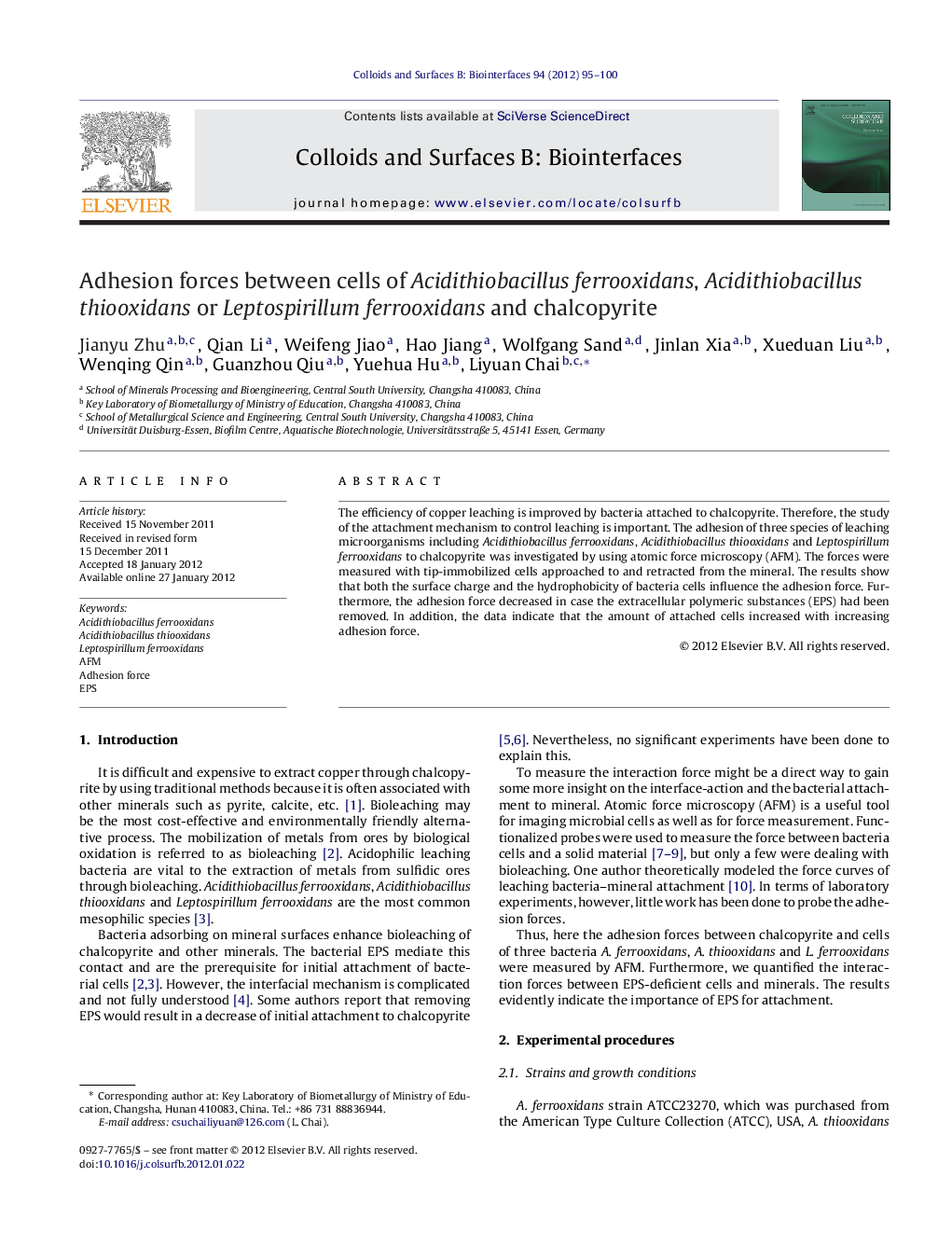| Article ID | Journal | Published Year | Pages | File Type |
|---|---|---|---|---|
| 600837 | Colloids and Surfaces B: Biointerfaces | 2012 | 6 Pages |
The efficiency of copper leaching is improved by bacteria attached to chalcopyrite. Therefore, the study of the attachment mechanism to control leaching is important. The adhesion of three species of leaching microorganisms including Acidithiobacillus ferrooxidans, Acidithiobacillus thiooxidans and Leptospirillum ferrooxidans to chalcopyrite was investigated by using atomic force microscopy (AFM). The forces were measured with tip-immobilized cells approached to and retracted from the mineral. The results show that both the surface charge and the hydrophobicity of bacteria cells influence the adhesion force. Furthermore, the adhesion force decreased in case the extracellular polymeric substances (EPS) had been removed. In addition, the data indicate that the amount of attached cells increased with increasing adhesion force.
Graphical abstractFigure optionsDownload full-size imageDownload as PowerPoint slideHighlights► Measuring adhesive forces between Acidithiobacillus ferrooxidans, Acidithiobacillus thiooxidans, Leptospirillum ferrooxidans and chalcopyrite by AFM. ► Surface charges and hydrophobicity of bacteria influence the adhesion force. ► The adhesion force decreased markedly while the EPS were removed. ► The amount of attached cells increased with the growth of the adhesion force.
